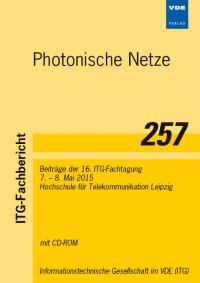Lab Implementation of 10 Gbps/channel Optical Transmitter Diversity Scheme for Geostationary Satellite Feeder Links
Konferenz: Photonische Netze - 16. ITG-Fachtagung
07.05.2015 - 08.05.2015 in Leipzig, Deutschland
Tagungsband: Photonische Netze
Seiten: 3Sprache: EnglischTyp: PDF
Persönliche VDE-Mitglieder erhalten auf diesen Artikel 10% Rabatt
Autoren:
Mustafa, Ahmad; Giggenbach, Dirk; Poliak, Juraj; Shrestha, Amita; Mata-Calvo, Ramon; Fuchs, Christian (German Aerospace Center (DLR), Institute of Communications and Navigation, Oberpfaffenhofen, Germany)
Inhalt:
Free-space optical (FSO) communications is an attractive alternative to microwave technology in geostationary (GEO) communication satellite feeder link applications, due to the possibility of transmitting information with high data rate, small antenna size, secure communication, and no spectrum licensing requirements. However, optical links through the atmosphere suffer from scintillation effects caused by index of refraction turbulence of the air. It aggravates stable signal detection in the uplink scenario. The benefits of transmitter diversity to mitigate the fading effects in the uplink GEO feeder link are verified by the recently conducted ArtemEx measurement campaign using unmodulated optical beams. In this paper, the lab implementation of the transmitter diversity technique using a 10Gbps data signal and using measured fading vectors from the ArtemEx campaign is presented.


